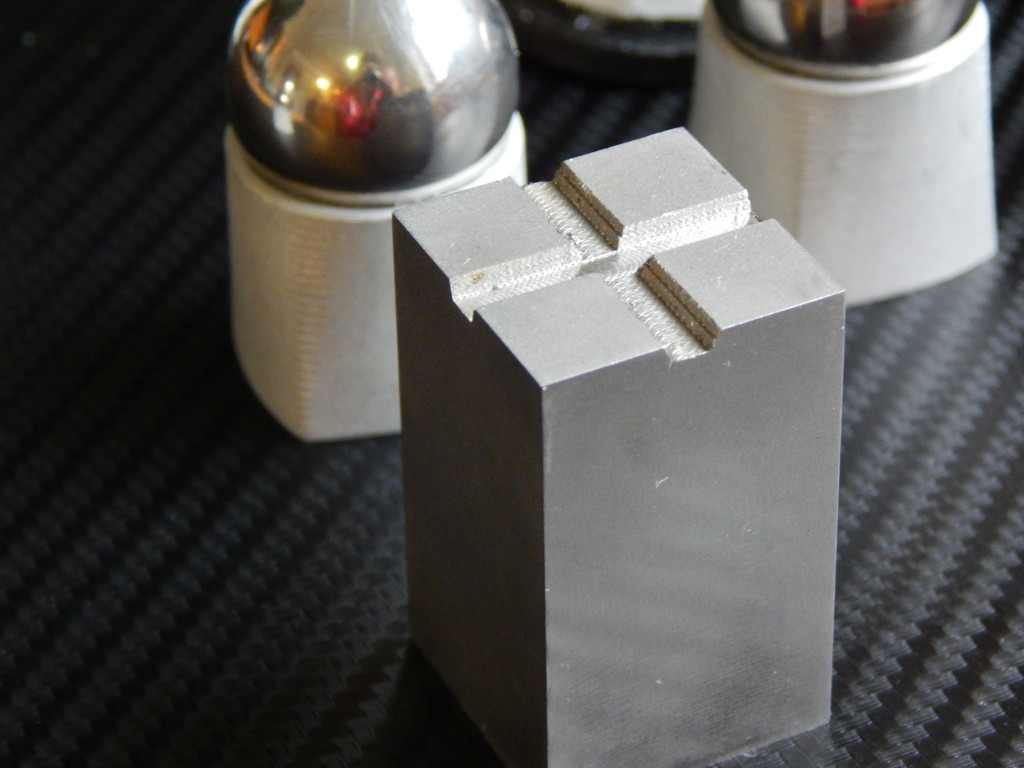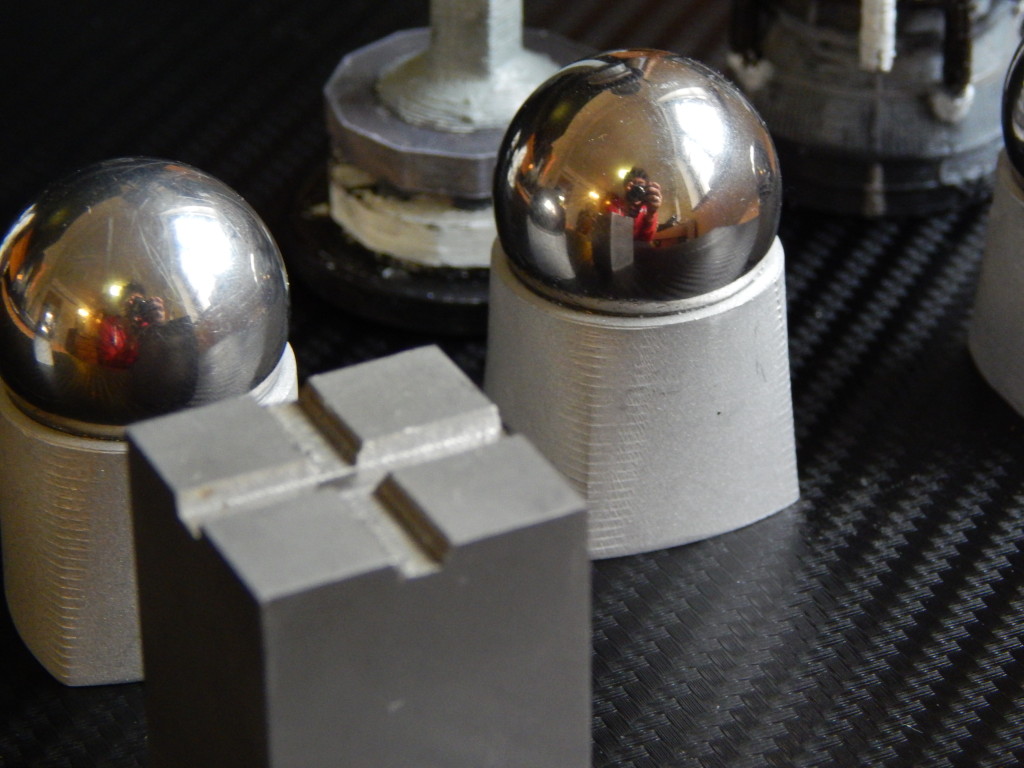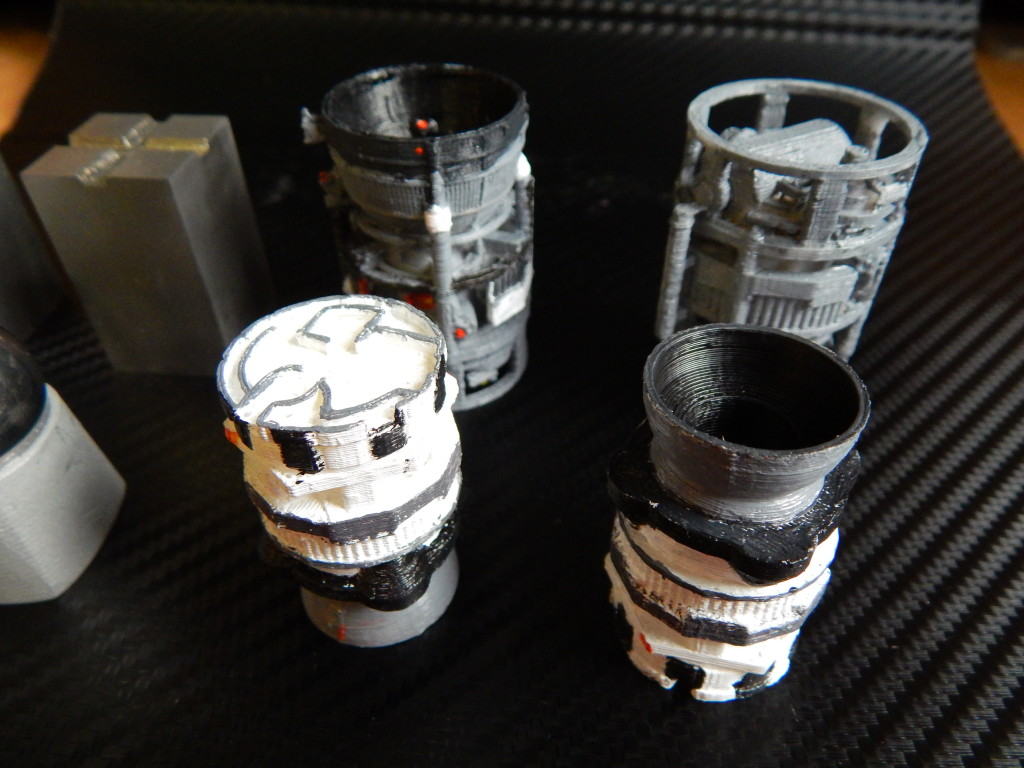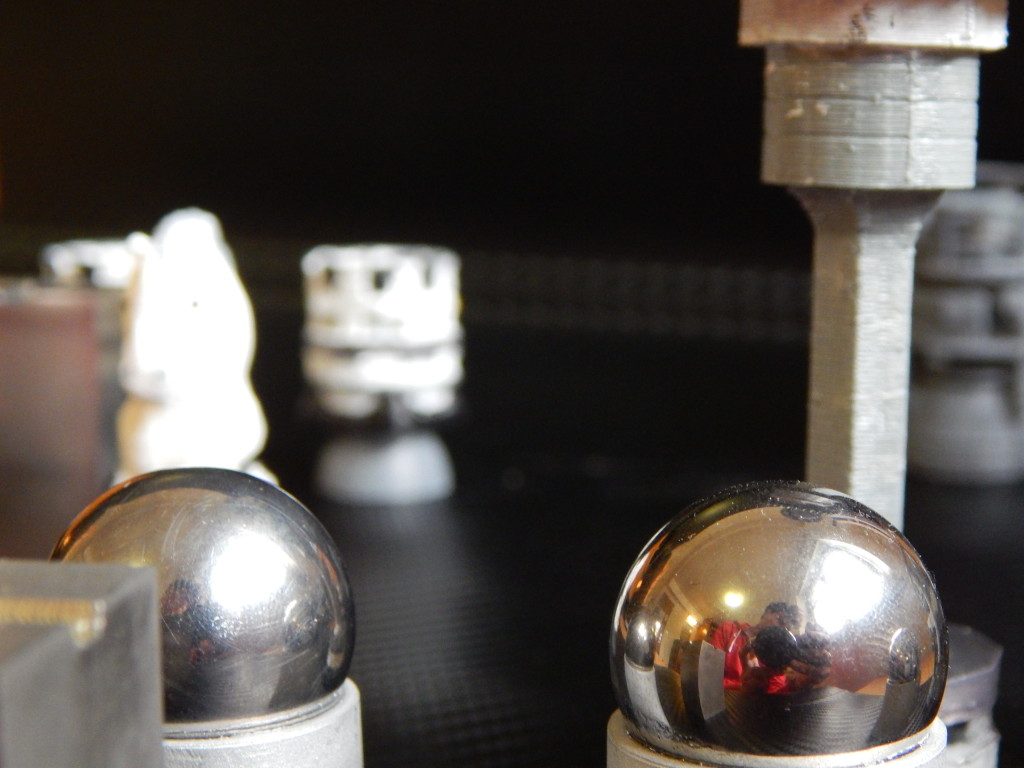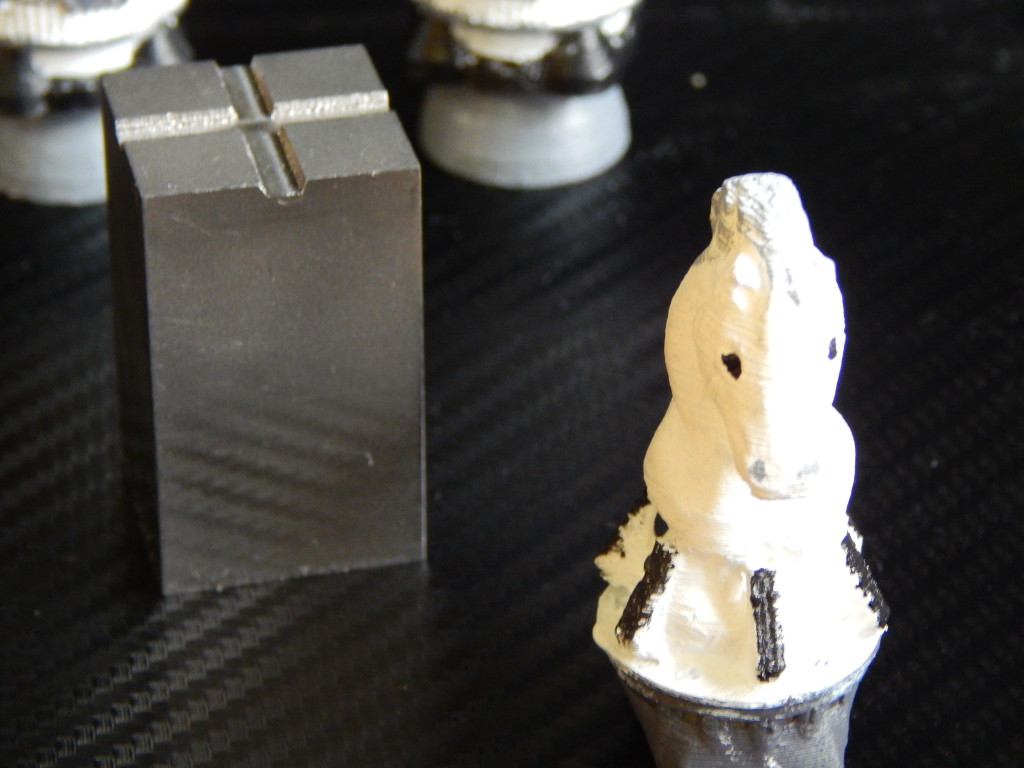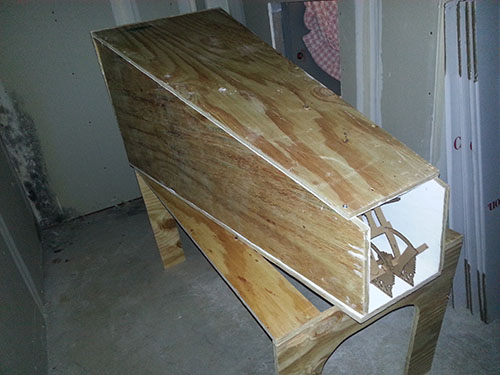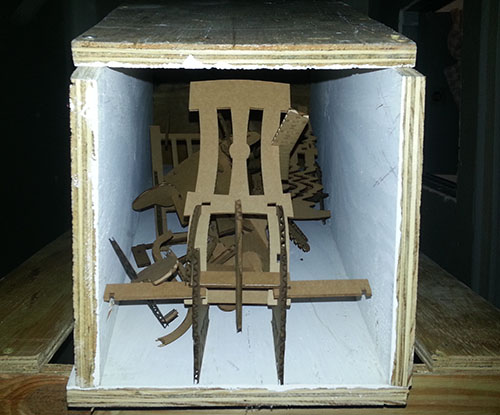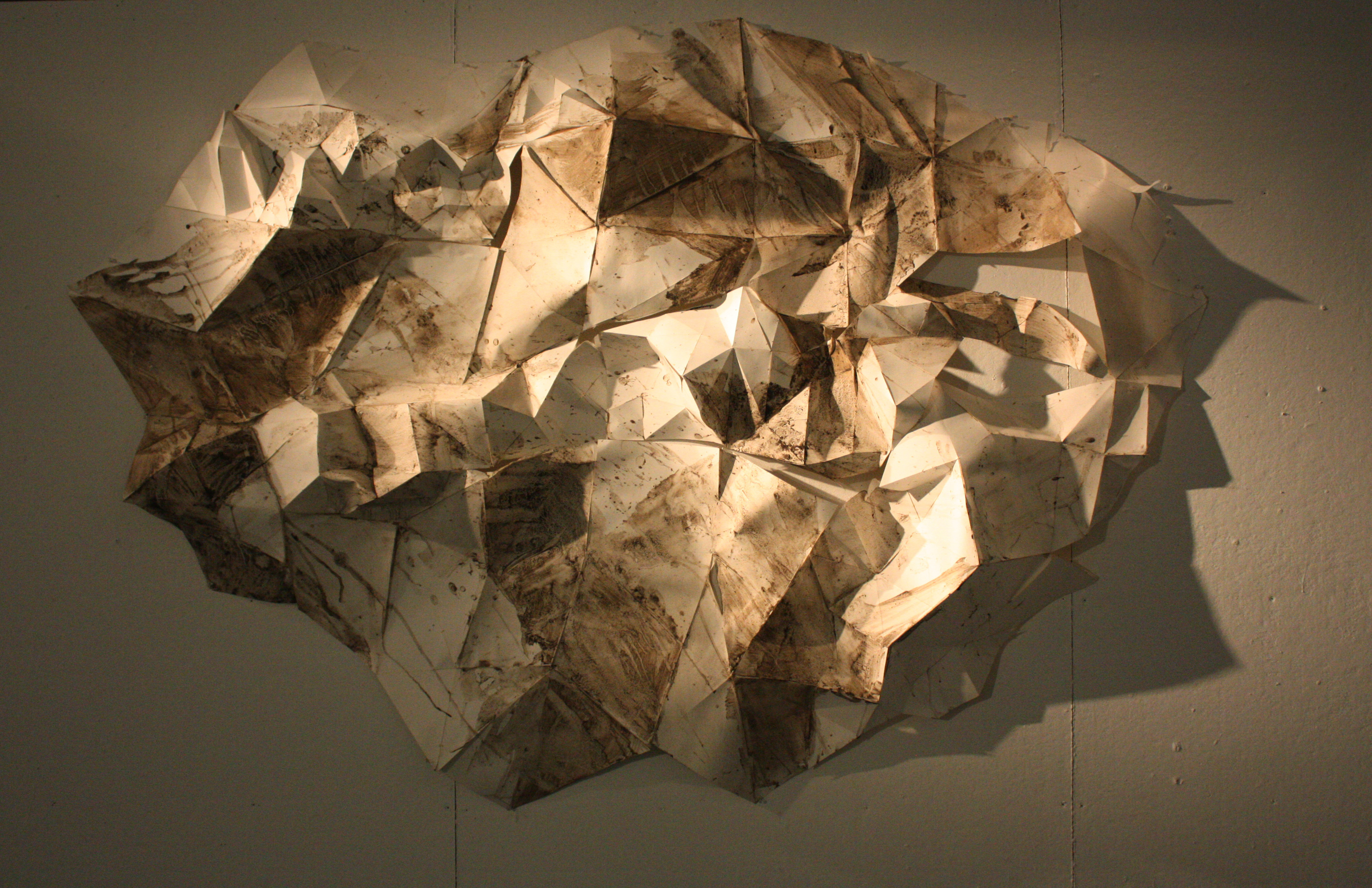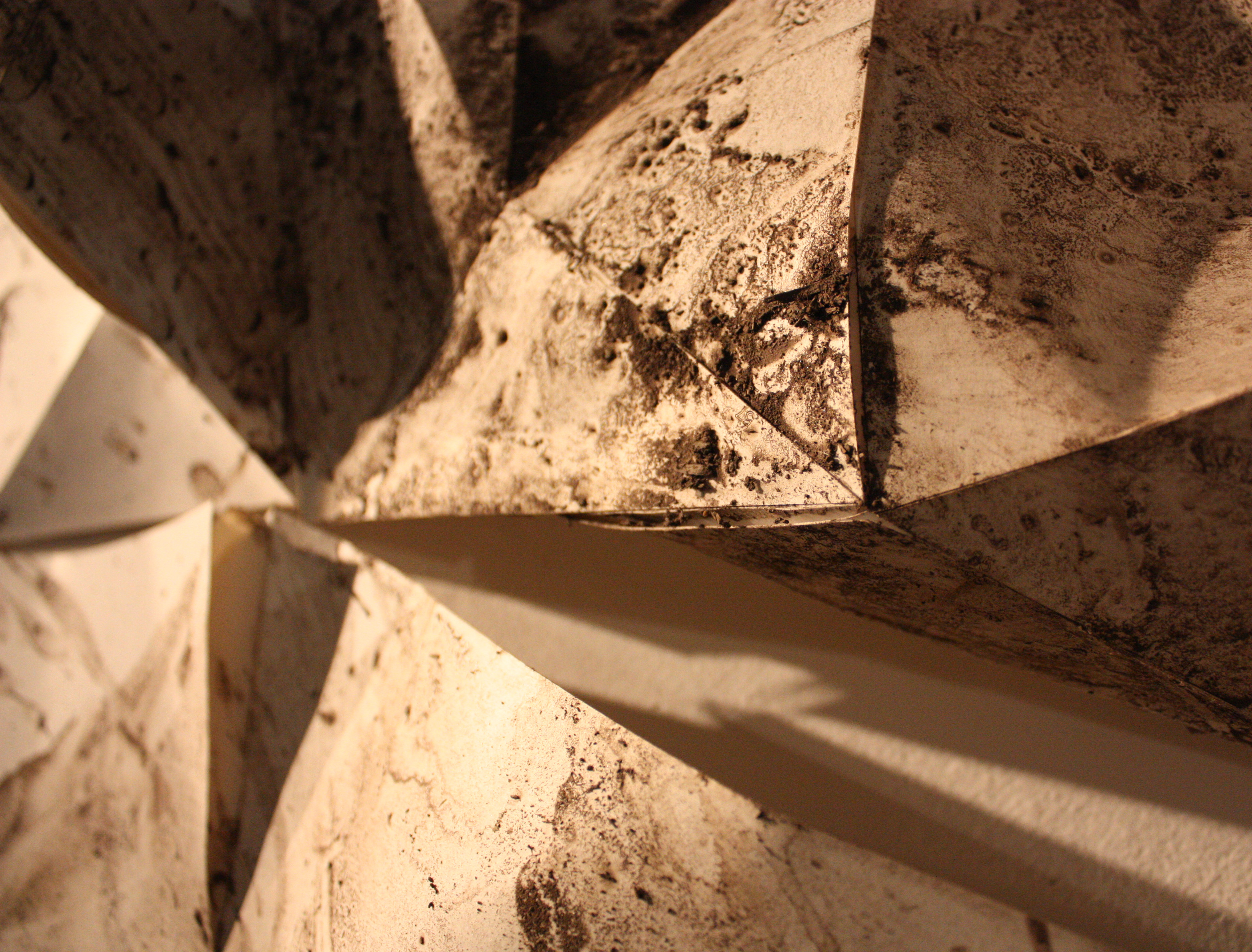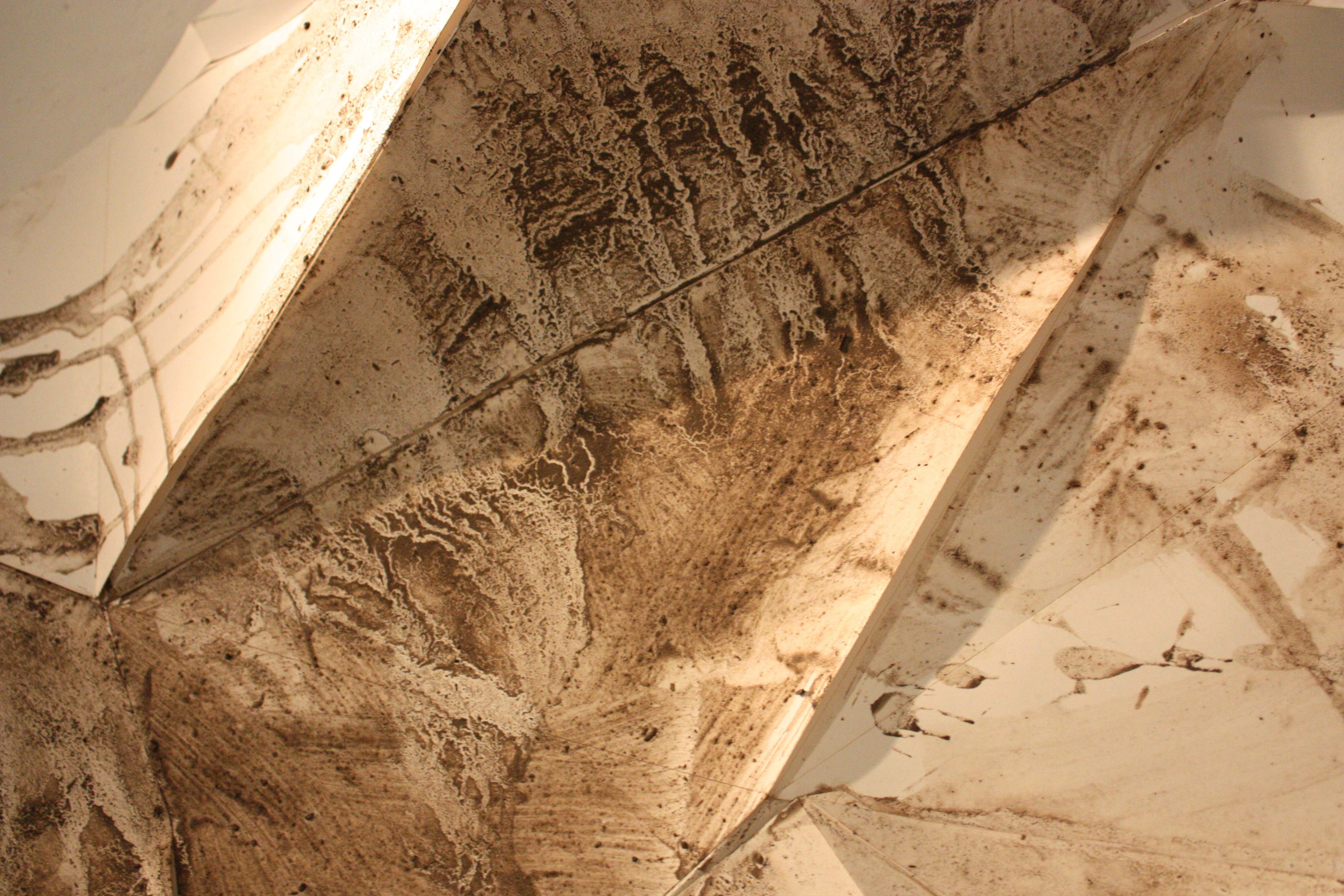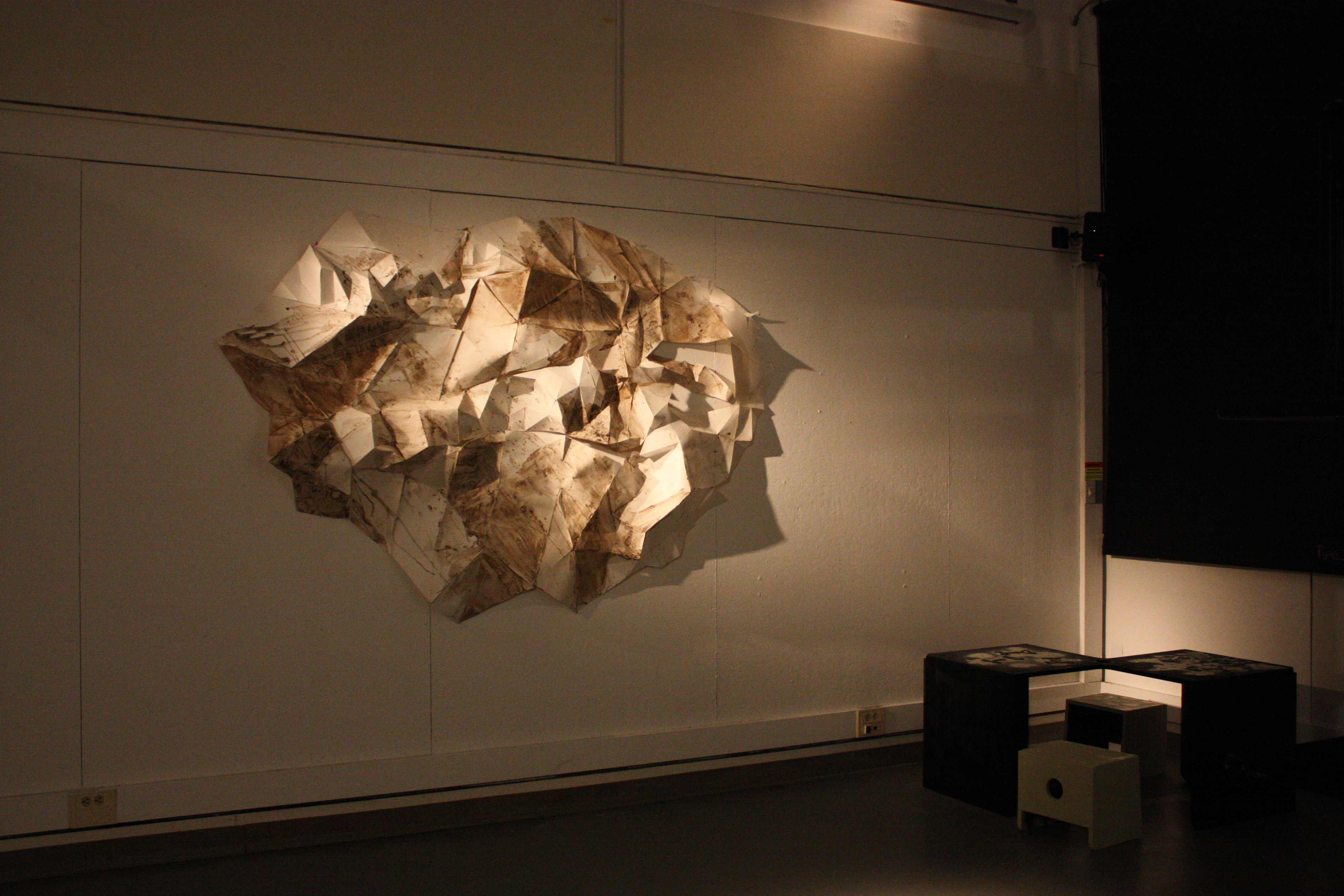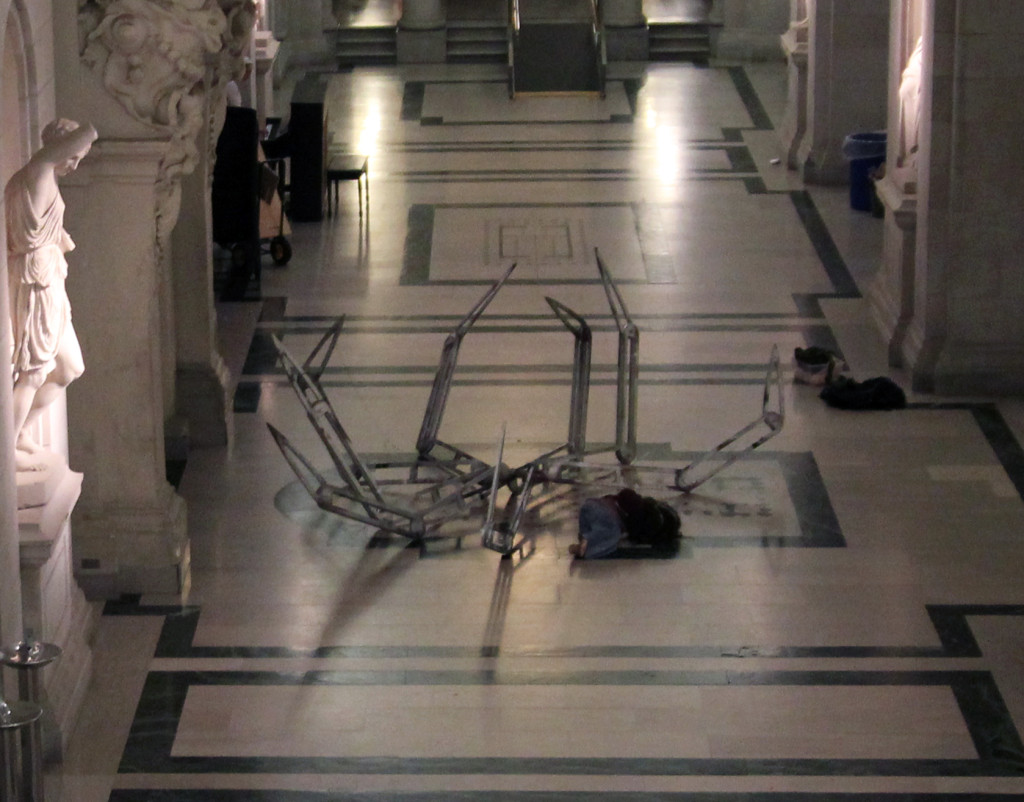
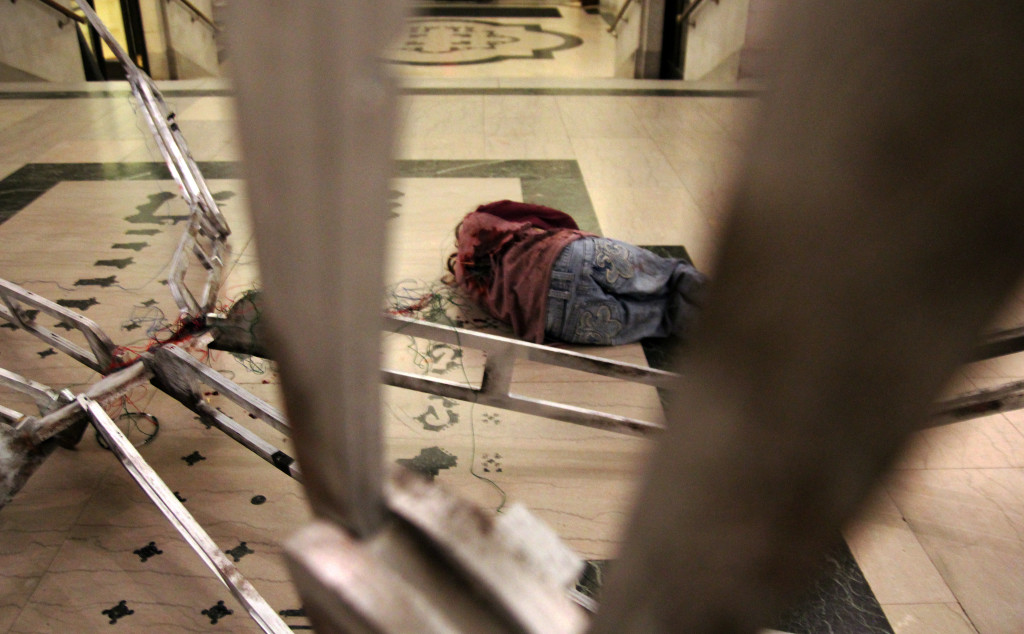
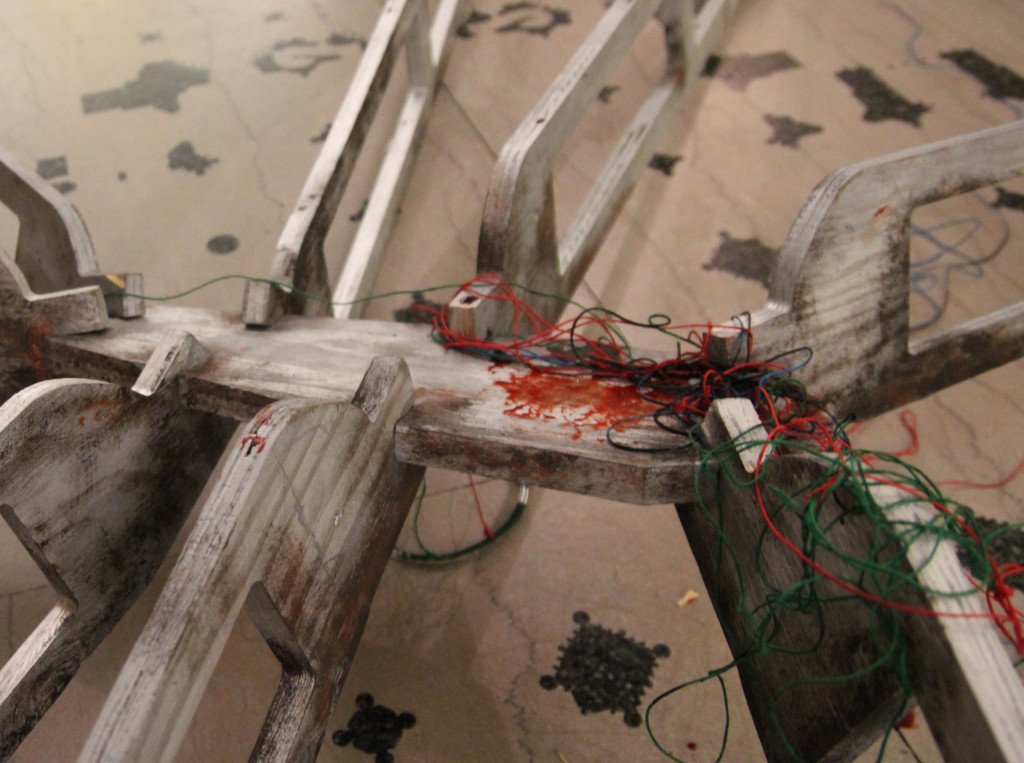
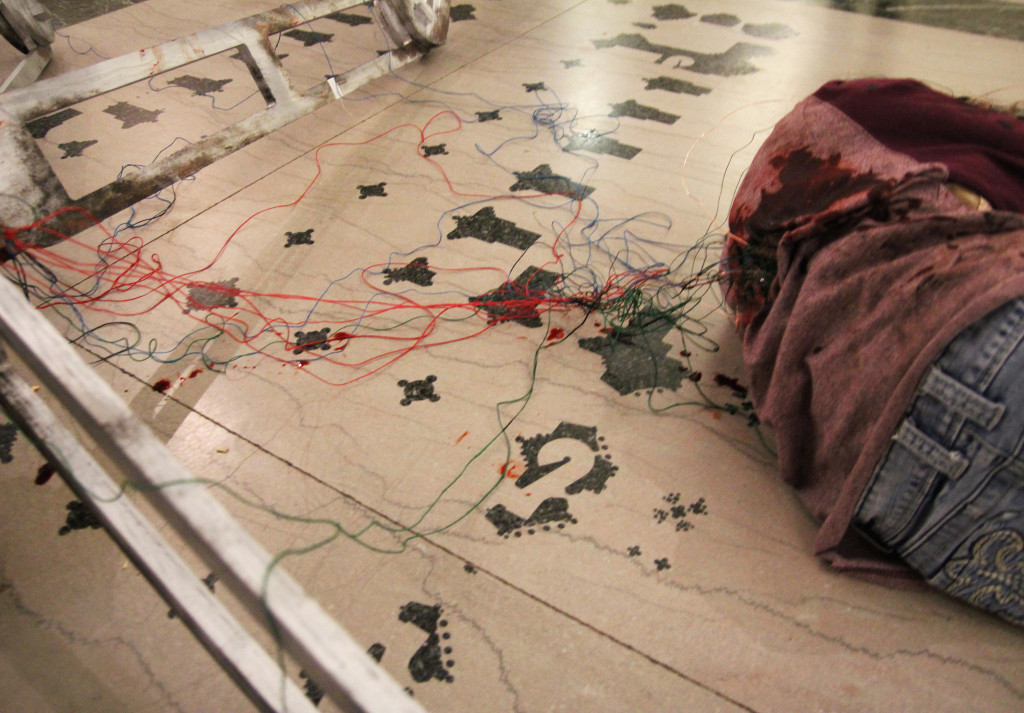

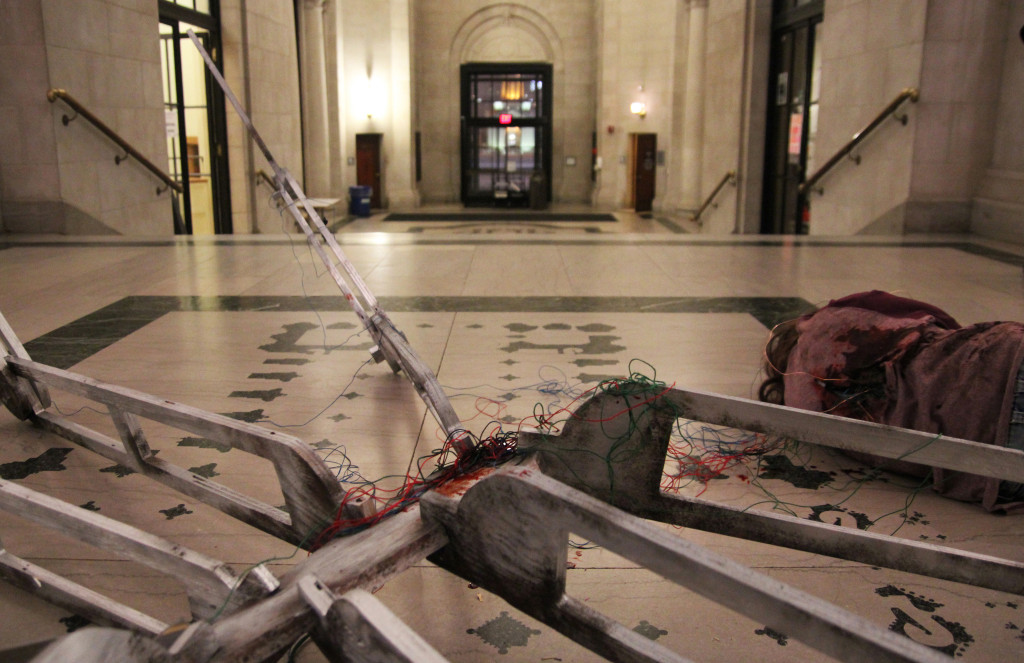
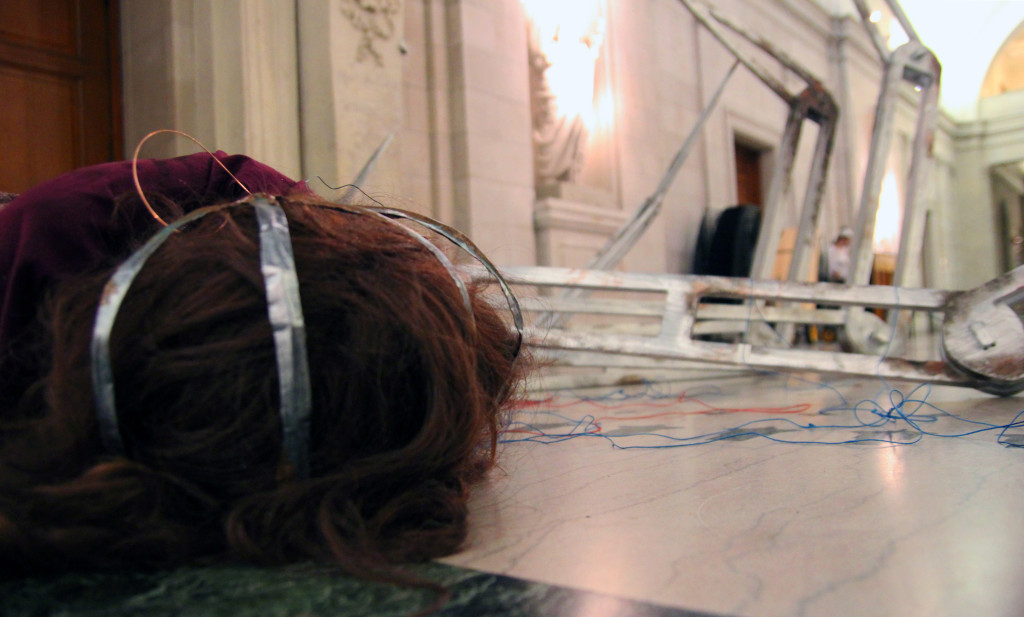
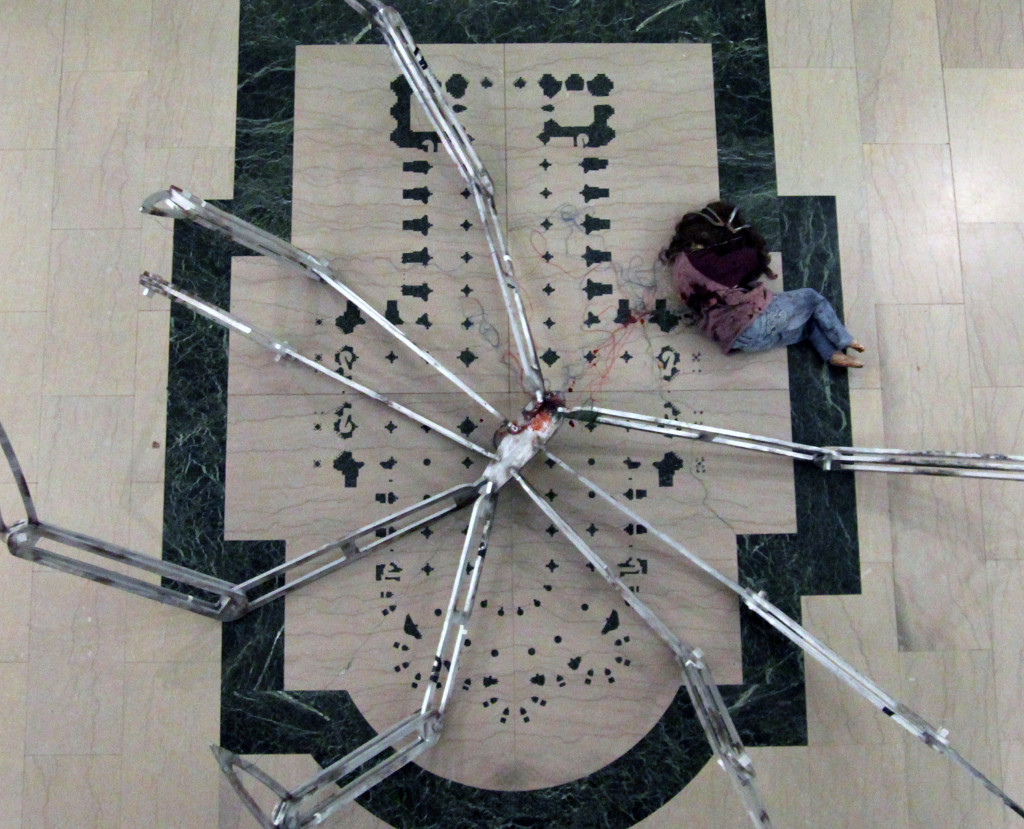
“The Widow” conveys a scene set in the distant future in which humans must adapt to survive in the harsh polluted world. At birth, these future humans are fitted with neural receptive spider limbs that aid them in crossing rough terrain unharmed. But like these physical adaptions, the future humans are also mentally superior, so much so that younger people are starting to fully understand their startling reality, and suicide is becoming more and more common in younger children. “The Widow” showcases a typical future suicide case in which this young girl attempted to dig her spider limbs out of her back in order to feel the freedom of walking unaided at least once before passing.
I would like to thank everyone that helped me in the (often time consuming) process of moving, setting up, and disposing of my piece.

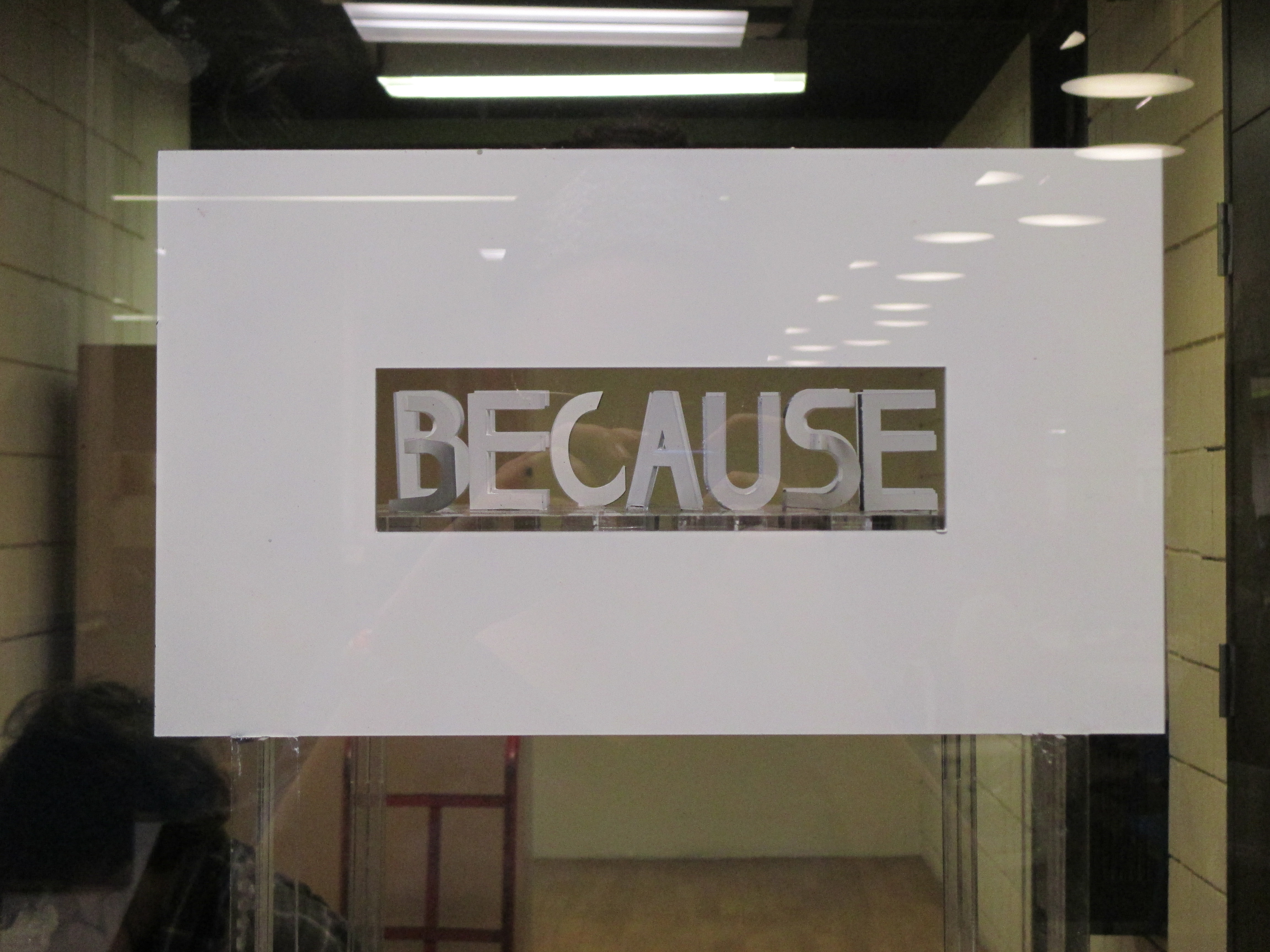



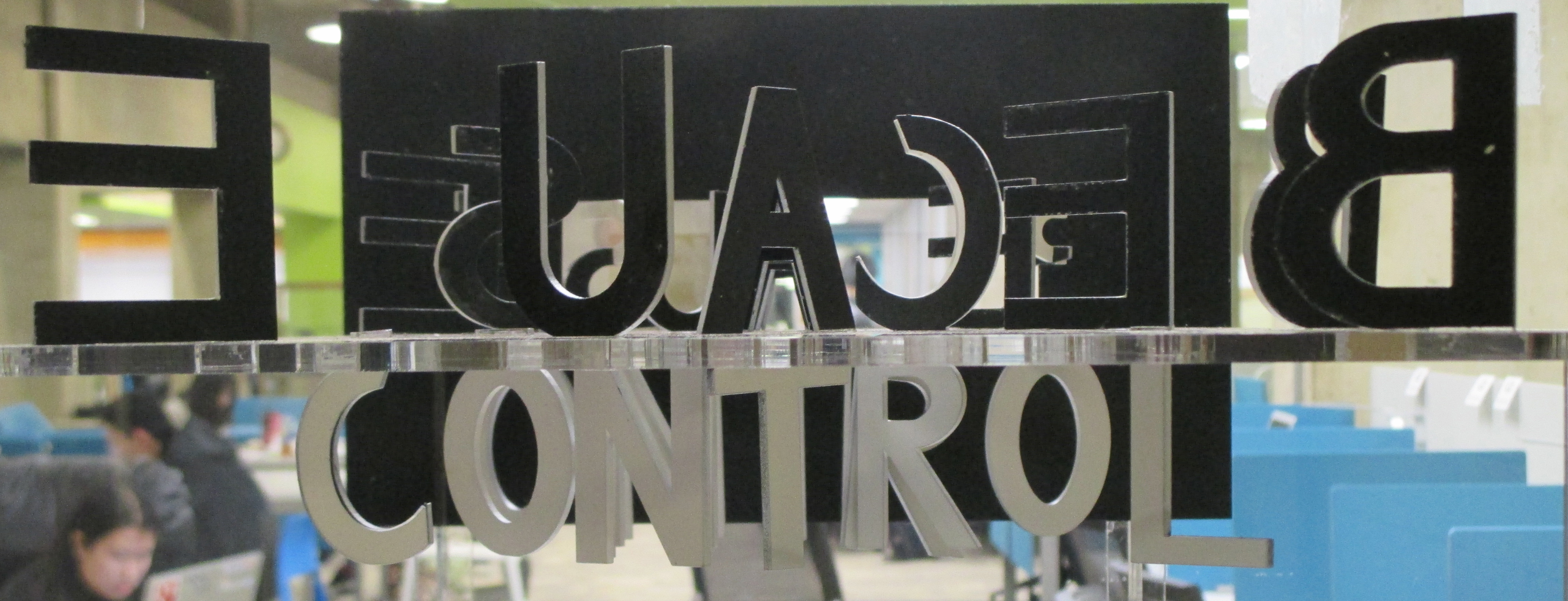
“Unreasonable Reasons” was inspired by a psychology experiment in which the word “because” was shown to have the power to persuade people even when paired with an unreasonable reason, in tandem with the prompt “instrument of persuasion.” The word “because” is displayed behind a glass window in a library, where people tend to trust in words and take them at face value. If the viewer is to see the rest of the piece, it is necessary to walk a long and roundabout path to reach the other side of the glass. Even then, it is difficult to comprehend all of what the words which appear from other angles mean, or even to see some of them in the first place. Most viewers would likely not choose, or even think, to make the trip, and those who did would quite possibly not see the full message. This arrangement is a metaphor for the way such commonplace persuasive words are treated. Many people do not realize their impact, and those who are told (including myself, on occasion) often think on the notion briefly and then proceed to treat words as they always have, rather than putting in the effort to comprehend the full impact of the ability to persuade with unreasonable reasons. The side views, which are most difficult to read, say “but we want a reason” and “to be unreasonable;” the back reads “control,” which was eerily enough the word which resulted from the letters in the side phrases that were not in “because” (with the exception of w, which I eventually transformed into a C/W hybrid). Control fits as a culminative phrase, however, because the piece is about the control words have over how we think, to the extent that we don’t even think about or realize that control.
A thank you to Ben for helping me set up the piece for photos, to Ali for helping me find the pedestal, and to the various people whose names I don’t know who held doors for me while I was transporting this piece.
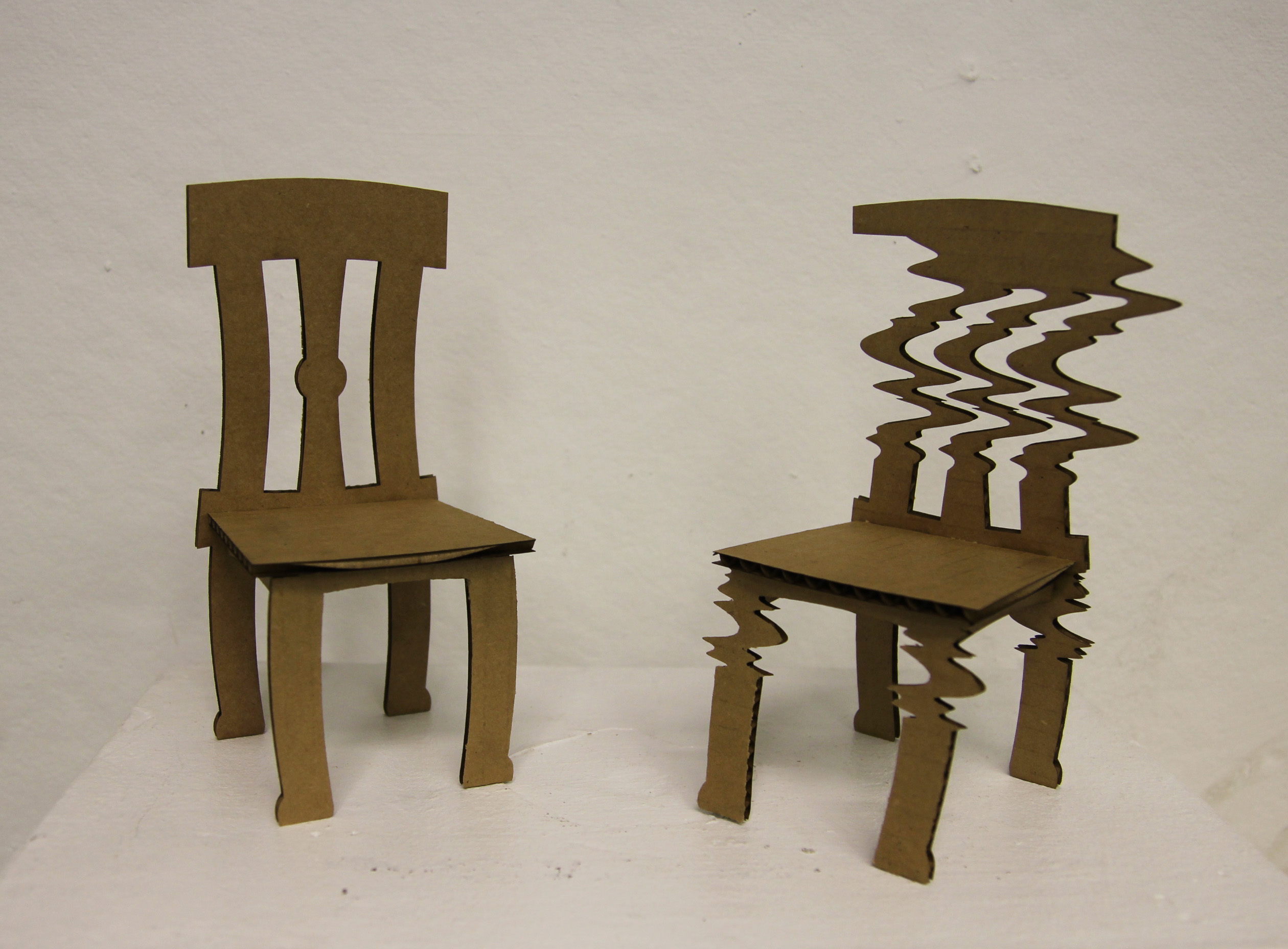
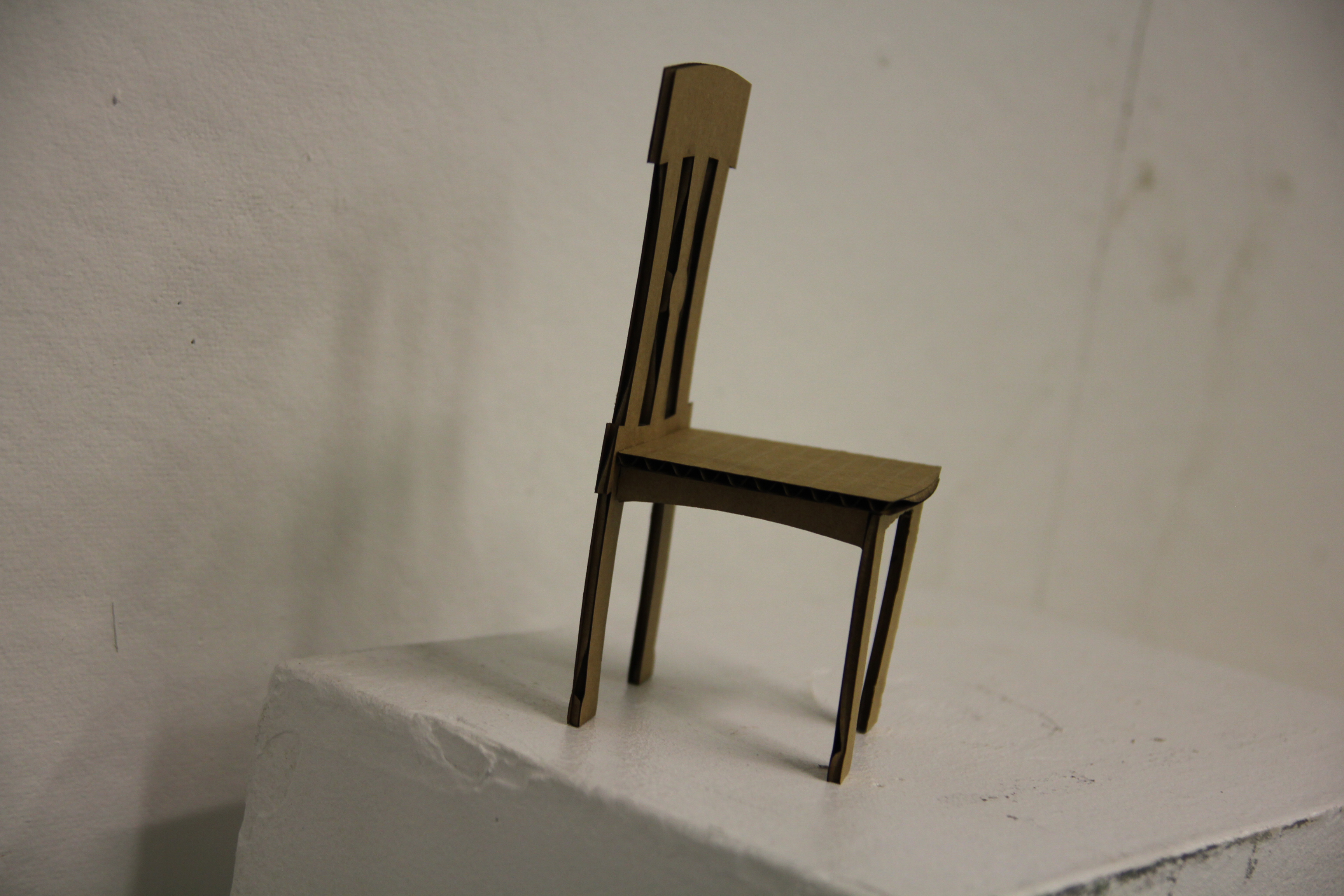
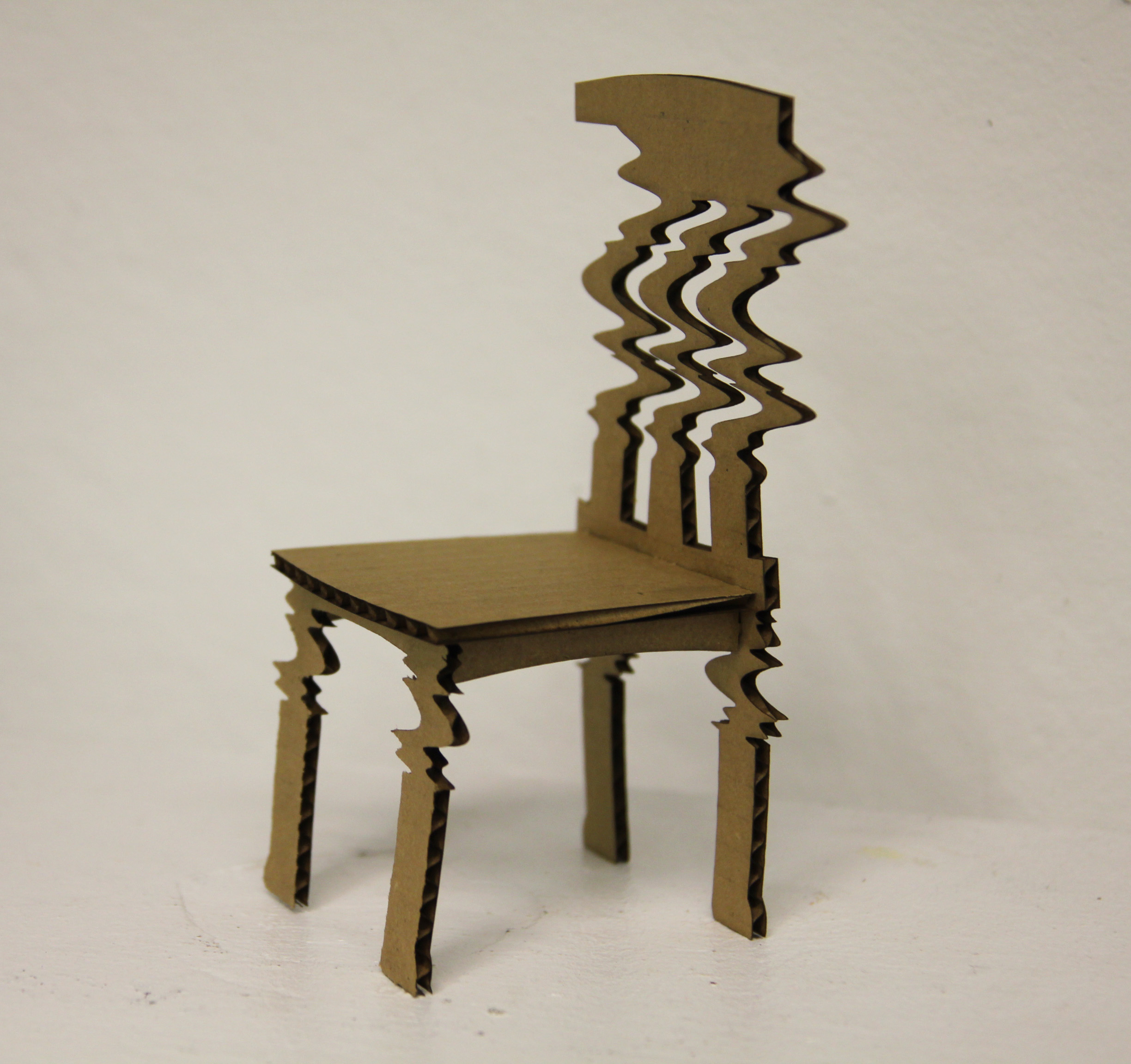
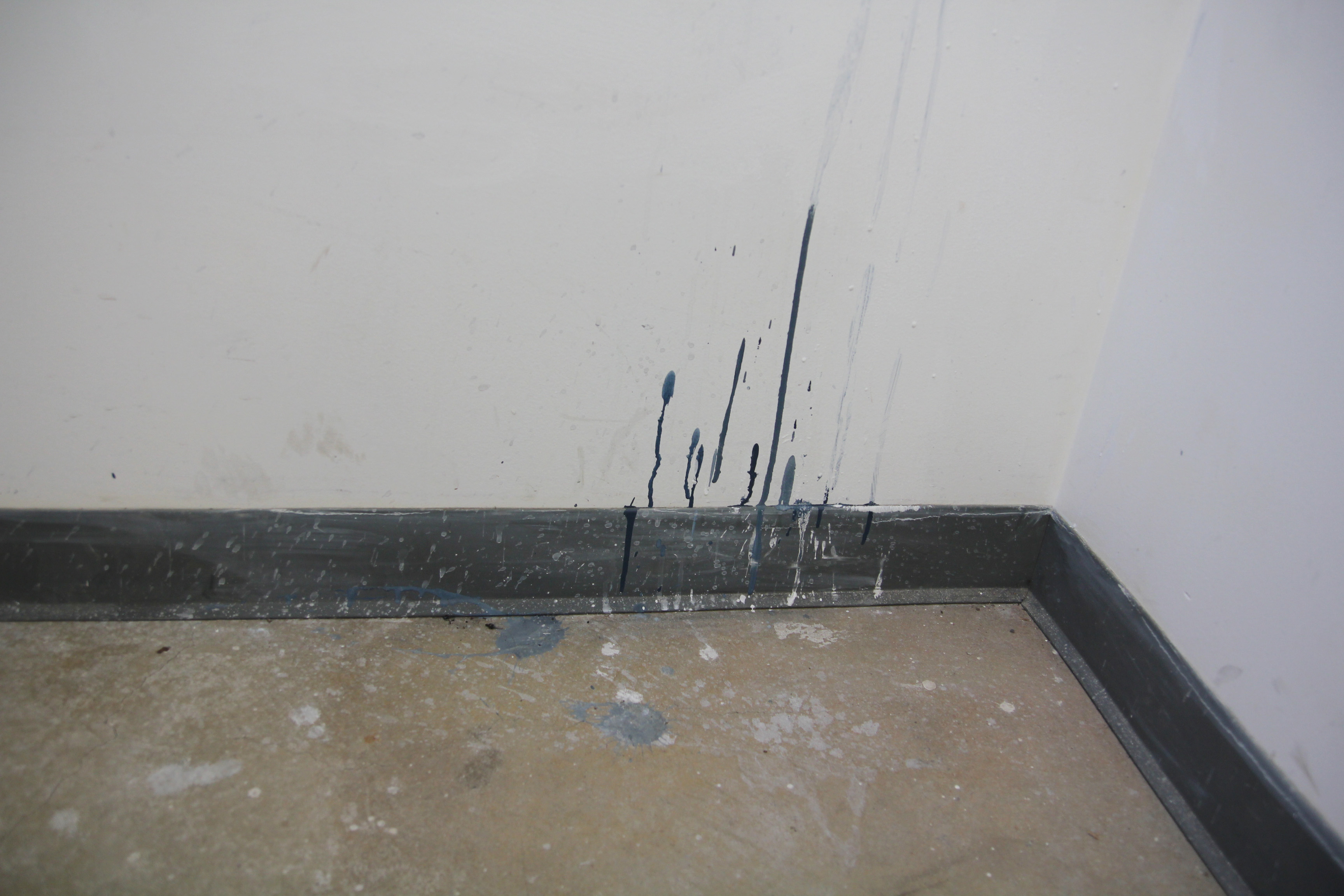
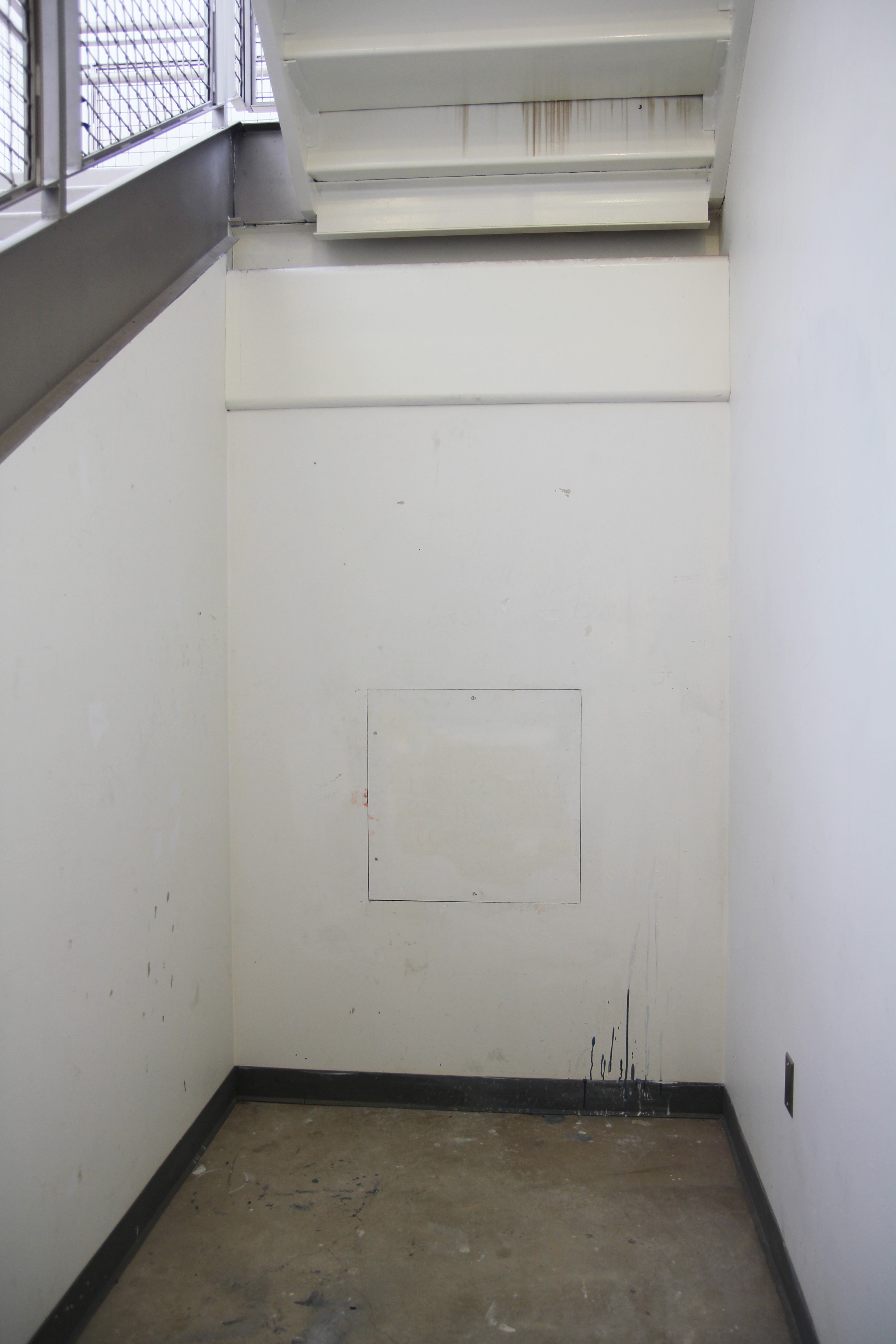
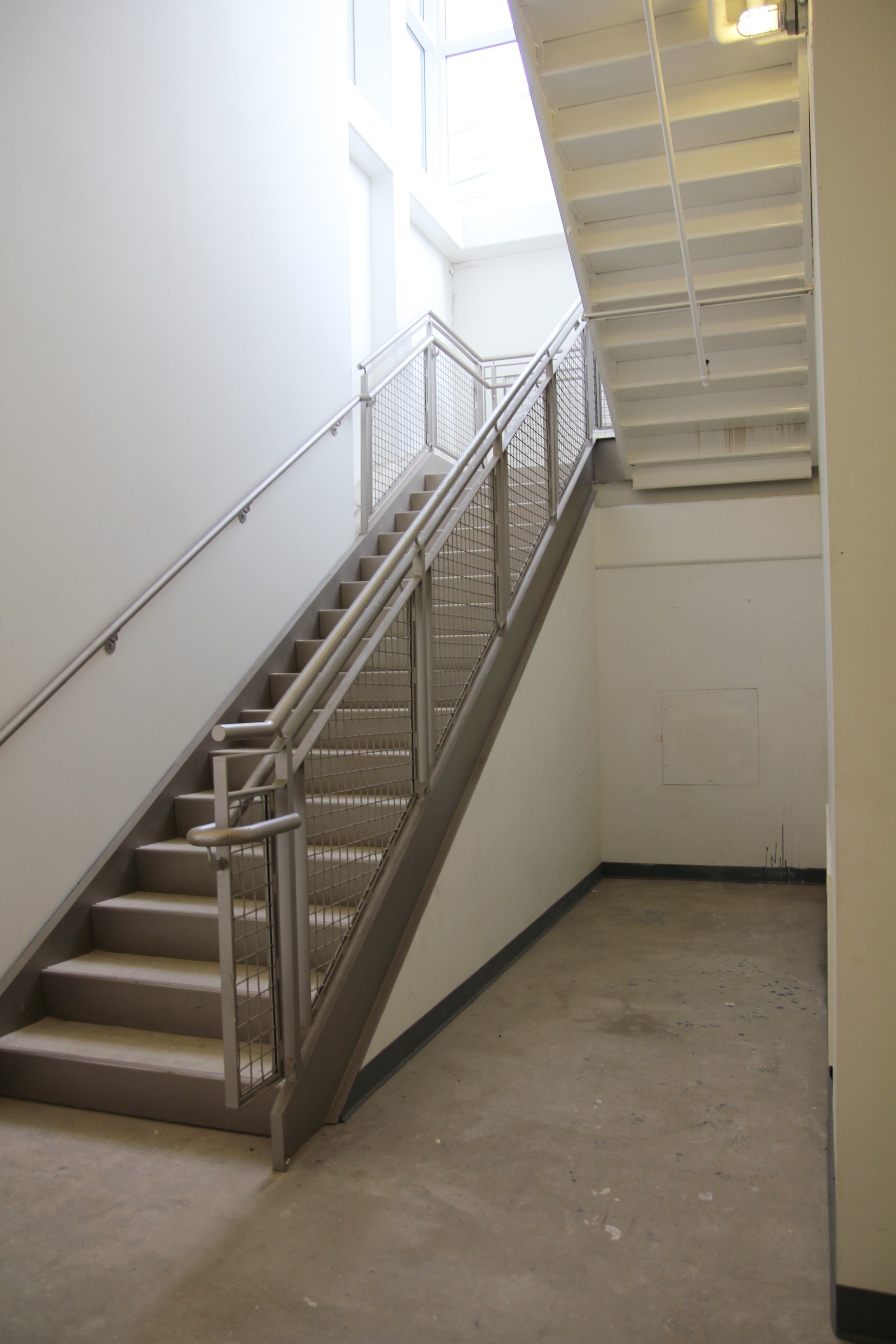
“State-of-the-Art Virus” is a conversation between a doctor and the first computer-augmented human to contract a digital virus. From mechanical prosthetics to neural implants, I think that humans are heading towards a physical synthesis with the technology we’ve come to depend on. Yet, this synthesis opens us up to a slew of new ailments, which may one day result in such a thing as prescription antivirus. Additionally, there’s an interesting parallel in the fact that malware infections in medical equipment has become a big problem in recent years.
The doctor’s chair has a straight back and a professional appearance, with slight, soft curves to suggest an organic element. The patient’s chair is a corrupted version of the doctor’s chair, whose warped effect was inspired by a distorted cabinet designed by Italian designer Ferruccio Laviani. Due to it’s viral nature, the patent’s chair is not meant to be interacted with. In the final design, both chairs will have another pair of support beams closer to the bottom of the legs to increase stability.
As for the setting, I was looking for something minimalist, well lit, and sterile. Yet, I was captivated by the paint splatters in this alcove and the rust stains on the staircase, as they incorporate the chaotic entity of the virus into an otherwise clean environment. This location is meant to be a secluded corner of a hospital, where the doctor and patient anxiously discuss what can be done to combat this new ailment.
